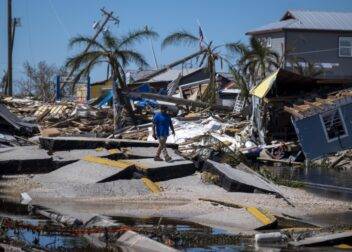What is home insurance?
Understanding your home insurance deductible can help you decide how best to protect what may be the most expensive purchase you will ever make. Unfortunately, it’s not always easy to understand the fine print of your policy. Keep reading to learn how a homeowners deductible works, how it affects your insurance premium and how much deductible you may need.
What is a Dwelling?
Insurers generally define a dwelling as a physical structure that is used primarily as a private residence, such as a house, apartment, condominium, duplex or townhouse. Attached structures, such as a garage, are considered part of the dwelling. There are no exterior structures, such as a backyard shed.
What is home insurance?
Home insurance, also known as Coverage A under a homeowners policy, covers the physical structure of your home against certain types of hazards and dangers that result in repairs or remodeling. It does not apply to items inside your home or to freestanding buildings on your property.
When you buy a homeowners policy, you can choose a coverage limit and deductible for your home insurance. Typical coverage limits range from $100,000 to $500,000, and deductibles can range from $500 to $2,000, depending on the policy and insurer. Insurers reimburse claims based on a fixed dollar amount, not a percentage.
What does home insurance cover?
Homeowners can expect home insurance to cover their major structures against a variety of approved hazards and dangers, including the following:
- Fire and smoke damage , caused by lightning strikes, electrical equipment malfunctions or a kitchen towel too close to the stove.
- Wind or hail that can damage your roof, topple trees on your home, break windows and damage siding.
- Snow, ice and sleet that can freeze pipes or damage your roof
- Water damage such as ceilings or walls ruined by leaking pipes
- Explosions that can occur when aerosol cans malfunction or a gas grill ignites.
- Cars that crash into homes, causing significant damage, such as garage doors.
- Falling objects such as asteroids, satellites, aircraft parts, and meteors (no matter how unlikely)
- Vandalism, which can include intentional destruction of property.
What doesn’t home insurance cover?
Home insurance is just one type of coverage in your homeowners insurance policy. While it protects the physical structure of your home from many hazards, there are some things that are not included in home coverage.
Flooding can damage both your property and your residential structure, but home insurance does not cover the costs associated with it. This is covered under a separate flood insurance policy. Depending on where you live, you may need to buy this type of insurance.
Earthquakes can cause significant structural damage. Earthquake insurance is not required even in regions prone to such activity. However, it will cover damage in the event of an earthquake, which home insurance does not cover.
Homes that are improperly maintained can fall into disrepair due to lack of proper maintenance, such as failing to replace a leaky roof or dealing with a pest infestation.
Sewer backups, sump pump problems, and other drainage problems usually require a separate additional policy that covers certain water systems.
What kind of home insurance do I need?
Home insurance coverage typically ranges from $100,000 to $500,000, depending on the policy, and deductibles typically range from $500 to $2,000. Experts say that before you decide which home coverage to include in your homeowners policy, you should estimate the cost of rebuilding your home in today’s market. You can contact a real estate agent or property inspector to help you with this. When choosing a deductible, choose an amount you could comfortably pay out of pocket in the event of a claim.
How does home insurance reimbursement work?
Homeowners insurance policy reimbursement depends on how much it will cost to replace or rebuild. Depending on the type of claim, insurers may or may not factor depreciation and normal wear and tear into the payout.
What is replacement value (RCV)?
Home insurance is usually reimbursed on a replacement cost basis (RCV), which means that you will receive up to a certain dollar amount in the event of a covered hazard or danger. If your home insurance has a coverage limit of $300,000, that’s the maximum amount you can get (minus your deductible) to repair or rebuild your home.
If the final repair bill is higher than what your home insurance covers, you will have to pay the difference out of pocket. To protect yourself from such an eventuality, you may want to consider buying additional home insurance. This can come in one of two forms:
Extended replacement value policies create a safety cushion to help with unexpected replacement cost overruns of up to 25 percent or more over your home coverage limit, depending on your insurance company and policy.
Guaranteed replacement value policies cover the ultimate cost of replacing or rebuilding your home, regardless of the amount, although some insurers may limit it to a set percentage over your home’s coverage amount.
What is the actual cash value (ACV)?
If a covered peril or hazard destroys part or all of your home, the things inside your home – your personal property – may be reimbursed based on replacement value or actual cash value. Payments under an actual cash value (ACV) statement take into account depreciation and normal wear and tear, which means that you will receive the fair market value of your property. In other words, a bedroom set you bought five years ago for $2,000 may only be valued at $1,000 if it burns down in a house fire.
Keep in mind that the amount of your home coverage affects the other amounts of coverage under your homeowners policy. Personal property protection, loss of use and other structures are usually calculated as a percentage of your home insurance coverage limit. For example, if your home insurance has a $400,000 limit and your personal property is set at 50% of that amount, your coverage limits would be $200,000.
Do condo owners need home insurance?
If you live in a condominium or co-op, you are only responsible for insuring the square footage you own. A general insurance policy for the entire building will affect what coverage you need for your unit.
Condominiums typically use an HO-6 policy, which operates similarly to a standard homeowners policy. It often includes housing, personal property, personal liability, loss assessments, and additional living expenses coverage, but is limited to the portion of the property you own. If a hurricane breaks one of your windows, your HO-6 home insurance will pay the cost of repairs because the damage was caused by a covered loss. As with standard home insurance, HO-6 policies have their limitations. Floods, earthquakes, invasions and other hazards are not covered.



